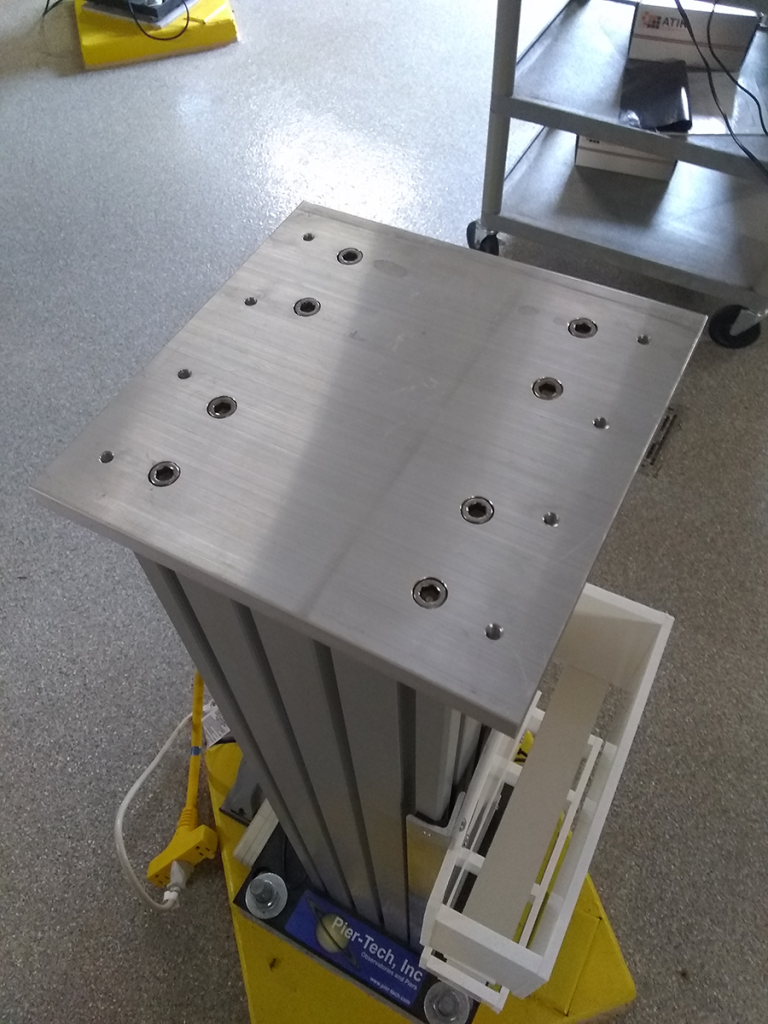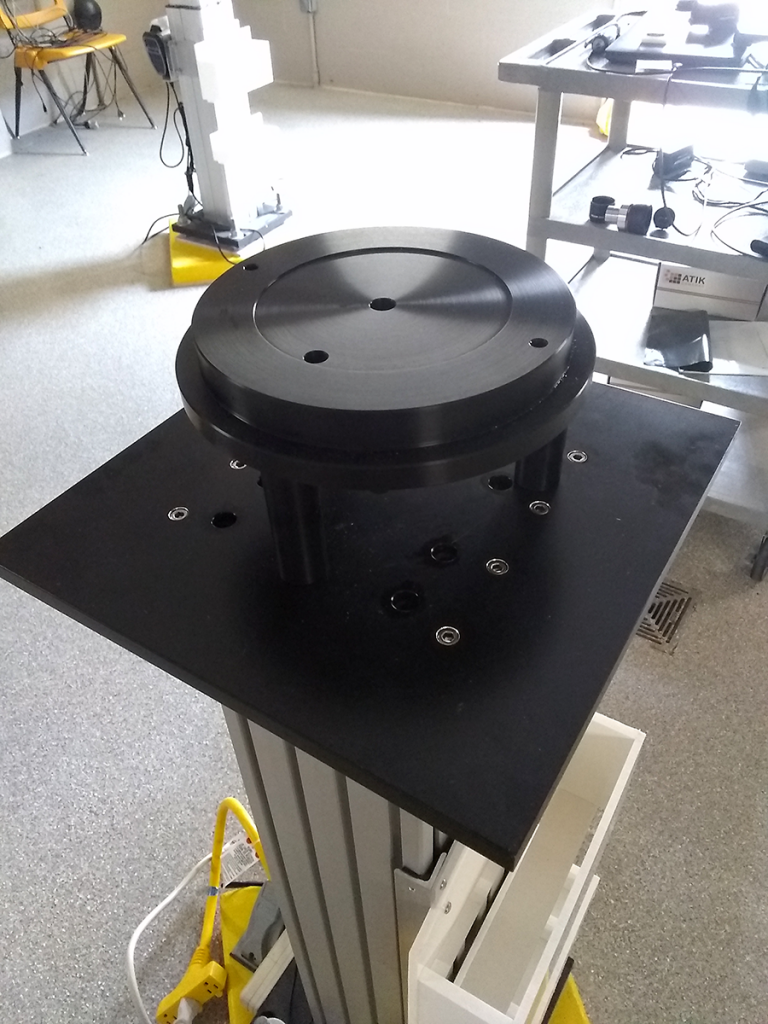
A great many jobs in the daily work of a shop consist of riffs on this: can you make item A connect to item B? It might be physical connections, electronic and/or digital signals, or even the relatively abstract interpretation of transitioning a lab space over from one experiment to the next without disruption. The simplest ones are when someone can’t locate the proper connector cable. (There are so many different kinds!) Less simple are those times when two things are supposed to fit, but don’t.
Just straight-up don’t.
At the Tressler lab, we have the luxury of permanently-installed piers which support our telescope mounts. For our purposes, this is an excellent improvement over the default, a very stable yet heavy tripod. Now in the process of upgrading our mounts, we find that the tapped mounting holes on the pier don’t match the drilled and counterbored corresponding holes on the custom-made mount adapters. By 1/8″ or more in some cases. Sounds small. Is actually huge. Is will-not-fit-even-with-brute-force huge.
Note: not made in-house. We could try to guess where the error might have arisen, but our job is to fix it.
Also note: the previous mounting plate was not precisely machined to the proper dimensions, either, but was close enough that it was fastened by brute force. Sensing a theme here, which is this: precise measurements are crazy hard.

Getting to the adapter-for-the-adapter called for more than one CNC-milled plastic prototype. Measure, mill, test. Rinse, repeat. Polyethylene, as one might imagine, is cheap stuff.
A few test runs later, we have a custom-machined (in-house!) sheet of 1/2″ aluminum to connect to the 5/16″-18 tapped holes on the pier, which then sets up a new series of 1/4″-20 holes in this plate and the mount adapter to hold everything rock solid. Holes drilled and tapped, counterbored for a clean surface with all of those socket screws.
And all carefully measured and aligned on the milling machine to within 0.001″.

You don’t appreciate the precision of reliable machinery and sharp tooling until the pieces slip together effortlessly. Whoa! Goosebumps!
Best part? The adapter is functionally invisible for anyone who doesn’t know to look for it. Few things feel as rewarding as solving a problem before (almost) anyone else realizes it’s there.